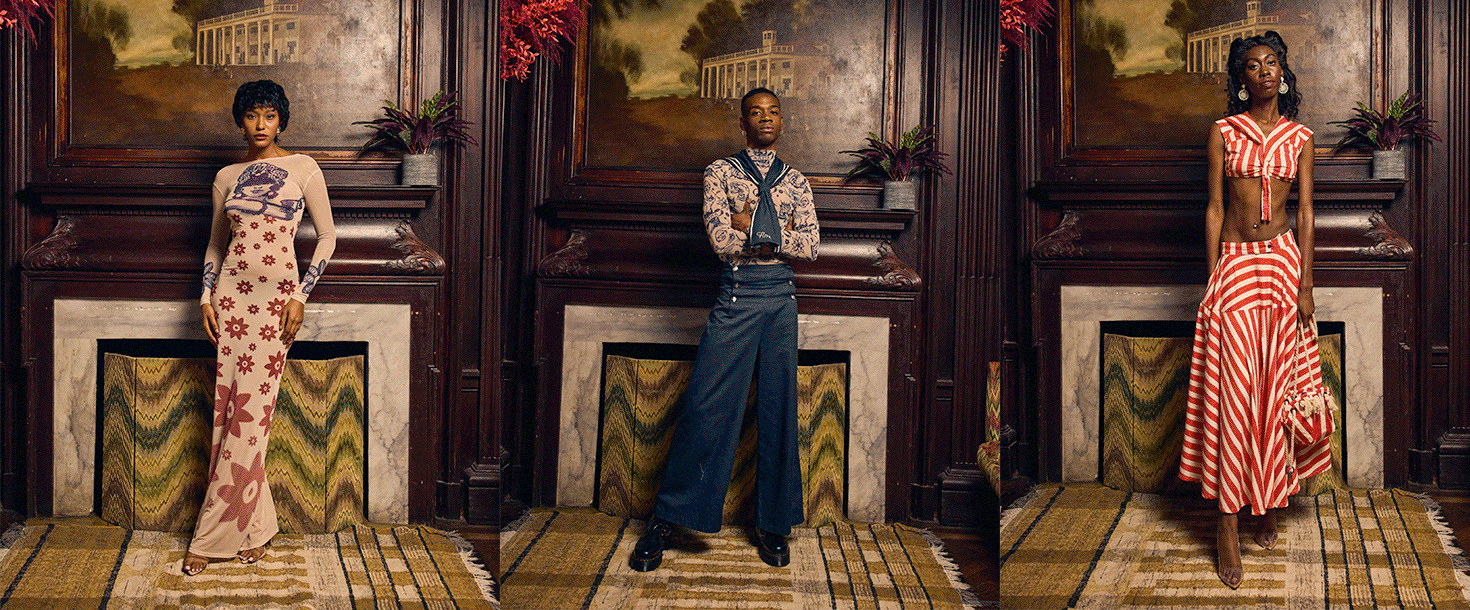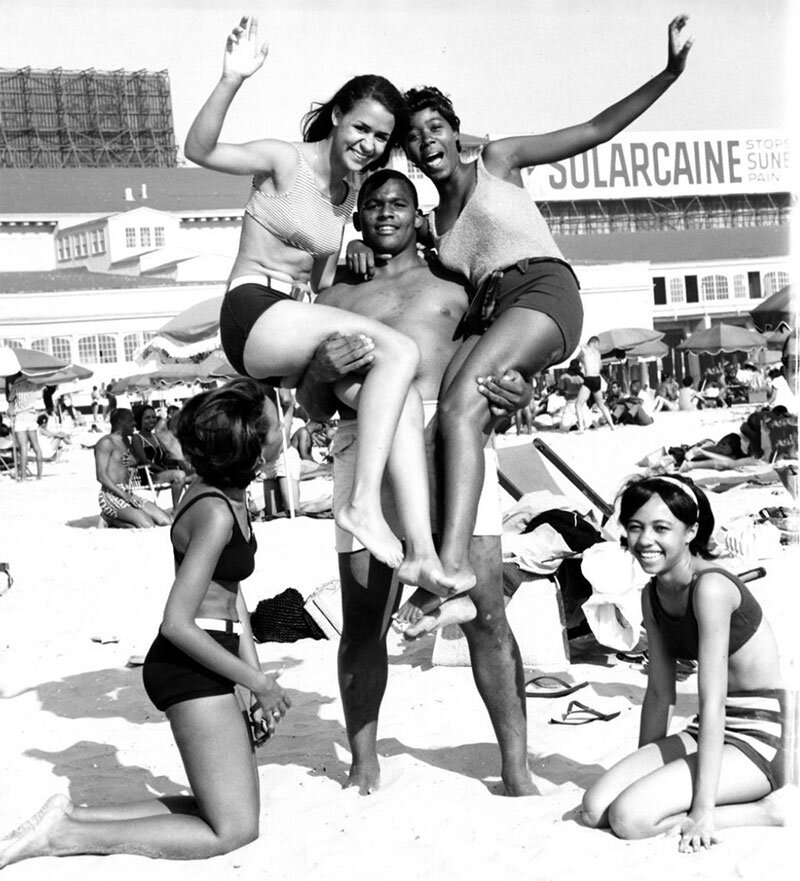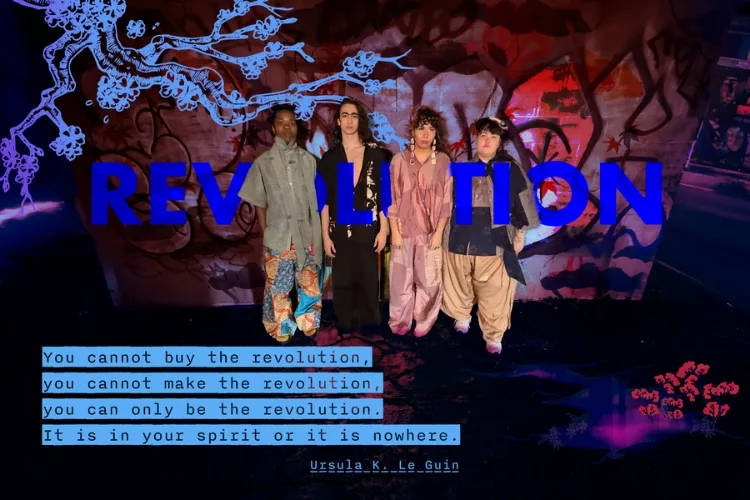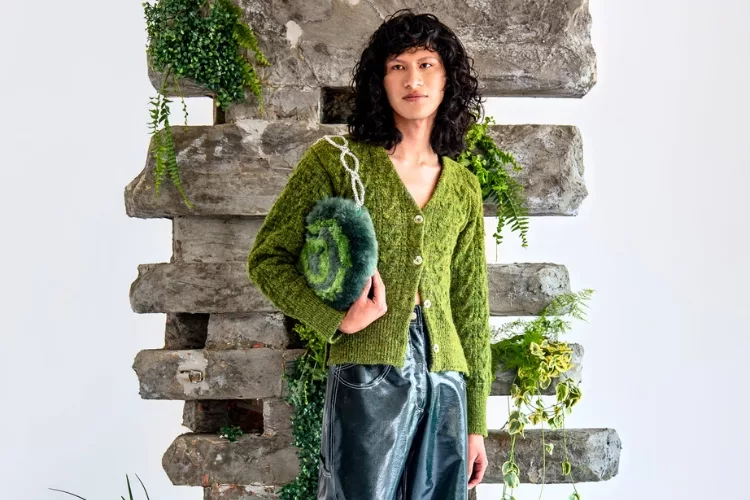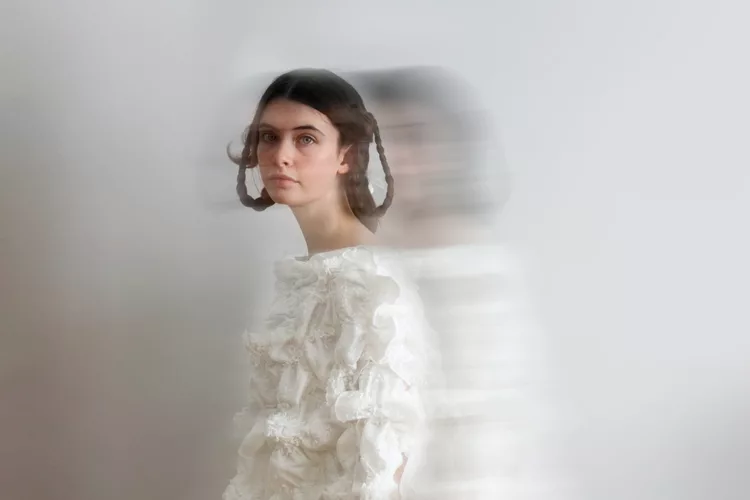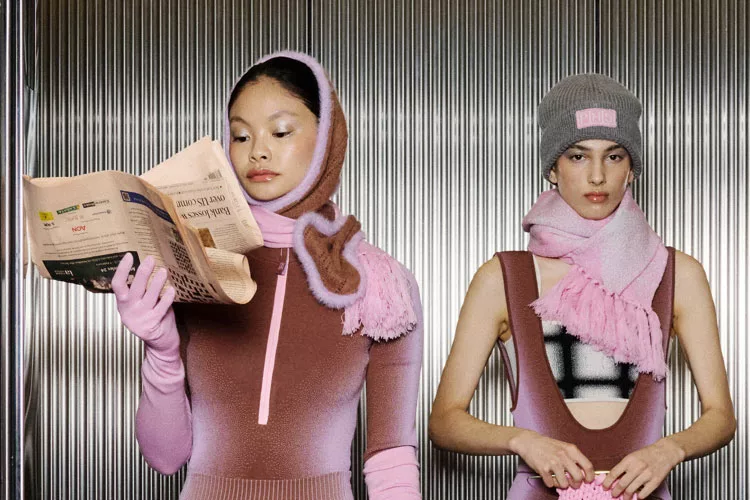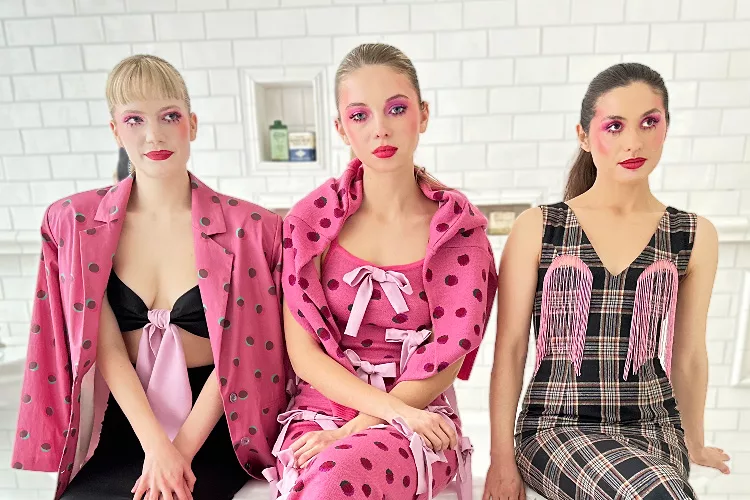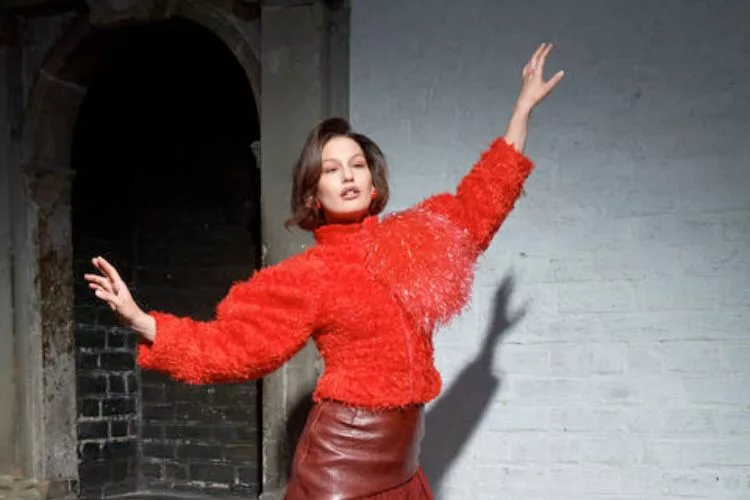Camp Aama Finds Inspiration in Historical Black Resorts
Photo: JD Barnes / Courtesy of House of Aama
The audience of this season’s House of Aama show were brought into another world when entering, the world of Camp Aama. A large table laid with candles, flowers and glasses was surrounded by draped chairs. To the sides sat beach balls, tennis rackets and towels as if ready for summer camp.
On every seat, a small card with the title “SALT WATER”—the name of the collection—told a folk story introducing the theme of the show. It read:
“Hello! I am an orisha spirit Olokun, from the Yoruba religion. Some say I am the first spirit to inhabit the earth before all other orishas. I am the ruler of all bodies of water, and the authoritative figure for other water deities. Those who worship me, my communities in both West Africa and the African diaspora view me as female, male, or androgynous. I am known for my gifts of wealth, health, and prosperity. Enough about me, what about you?”
Designed by mother and daughter duo Rebecca Henry and Akua Shabaka, House of Aama is known for their storytelling. This season, the collection focused on what Henry described as the unique relationship between Black people and water.
“It’s almost as if it came through us. And it’s also just a very important story in terms of Black people and their relationship to water, salt water refers to Black people who were brought here through the middle passage, that were born in Africa and not on these shores,” Henry said. “So we really wanted to explore spirituality and how they anchored themselves on these shores.”
A pause in the music signaled the show’s beginning, when a male model entered wearing a uniform somewhere between sailor and soldier, marching with the flag of Camp Aama. The collection that followed explored leisurely summer silhouettes, striking formal dresses and even swimwear.
Models, some with their hair in high rollers or beehives, came out displaying floral party dresses and in one crowd stopping moment, a matching set of blue and pink halter dresses on twin models. Others wore high waisted sailor pants with flowy collared shirts, one in yellow and another in a captivating berry shade.
Several pieces caught our eyes with illustrated graphic patterns, including a skin tight long sleeve top and even one of the high waisted strappy bikinis. These textiles were a new venture for the brand, using imagery of fish, snakes and a mask which appeared on the Folk Stories card.
“We just love building worlds, we really decided to explore textiles and embroidery work and we wanted to really see how we can use our namesake, our textiles and our illustrations to incorporate this story that we wanted,” Shabaka said.
IImg from a historical Black resort – courtesy House of Aama Instagram
The story being told through Camp Aama paid tribute to the real Black resorts that existed in America like Bruce’s Beach and Black Eden, which Henry described as “insular and cohesive” communities which created space for flourishing growth.
House of Aama not only creates beautiful and meaningful garments, but creates them with a sustainable mindset. Pieces are made to order in Los Angeles, and use fabrics with low carbon footprints.
The room wide runway soon became a presentation as models took their places and remained gathered in the center of the room. On one side stood models in swimwear and Camp Aama towels, on another, models wore casual two-piece sets in bold colors, and the versatility of this collection only grew with each corner turned.
Wrought with emotion and visually stunning, House of Aama’s Spring/Summer 22 collection was one of the highlights of this season’s NYFW. Henry and Shabaka display a story telling ability through their designs that is palpable to even a viewer taking only a cursory glance. Each and every design was intricate with detail, and presented all together created a scene no audience member is soon to forget.

